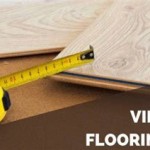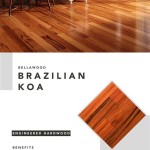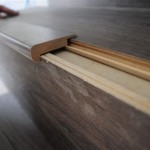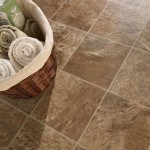Boat Flooring That Looks Like Wood: Aesthetics, Durability, and Alternatives
The maritime environment presents unique challenges to building materials. Direct sunlight, saltwater exposure, constant moisture, and the potential for impact damage all contribute to the rapid degradation of many materials commonly used in land-based construction. Boat flooring is particularly susceptible to these forces, demanding a material that is not only aesthetically pleasing but also incredibly durable and resistant to the harsh marine elements. Consequently, the desire for the classic, elegant look of wood flooring in boats has driven innovation in materials science, resulting in a variety of options that mimic the appearance of wood while surpassing its performance in marine applications.
Owners of boats, from small recreational vessels to large yachts, often seek to create a comfortable and visually appealing interior. Wood flooring offers a timeless aesthetic that can enhance the overall ambiance of a boat. However, traditional hardwood is prone to warping, rotting, and discoloration when exposed to moisture. The expansion and contraction of wood due to fluctuating humidity levels can also create problems with buckling and cracking. Furthermore, the high cost and extensive maintenance requirements of real wood make it an impractical choice for many boat owners.
The solution lies in alternative boat flooring materials designed to replicate the beauty of wood while offering superior durability and ease of maintenance. These materials, ranging from marine-grade vinyl and composite decking to specialized hardwood alternatives, provide a range of options to suit different budgets and aesthetic preferences. Understanding the properties and benefits of each material is crucial for making an informed decision about the best flooring option for a particular boat.
Marine-Grade Vinyl Flooring: A Practical and Affordable Option
Marine-grade vinyl flooring is a popular choice for boat owners seeking a cost-effective and low-maintenance alternative to real wood. This type of flooring is specifically engineered to withstand the harsh conditions of the marine environment. It is typically constructed from multiple layers of PVC (polyvinyl chloride), which provide excellent water resistance, UV protection, and resistance to mold and mildew growth. The top layer of the vinyl flooring is often embossed or printed with a wood-grain pattern, effectively mimicking the look of various types of wood, from traditional teak to lighter oak or maple.
One of the key advantages of marine-grade vinyl is its ease of installation. It can be glued down directly to the boat's subfloor or installed as interlocking planks or tiles. The flexibility of the material allows it to conform to the contours of the boat's hull, creating a seamless and watertight surface. Vinyl flooring is also relatively easy to clean, requiring only soap and water to maintain its appearance. Its resistance to stains and scratches makes it a practical choice for high-traffic areas on a boat.
While marine-grade vinyl excels in practicality, it’s important to acknowledge its limitations. The texture and feel of vinyl are noticeably different from real wood. High-end vinyl products can more accurately replicate the appearance of wood, but they often come at a higher price point. The lifespan of vinyl flooring can also be shorter than some other alternatives, particularly in areas that receive heavy use or prolonged exposure to direct sunlight. However, for boat owners on a budget seeking a durable and attractive flooring option, marine-grade vinyl offers a compelling solution.
Composite Decking: Combining Wood Fibers and Synthetic Materials
Composite decking offers a different approach to achieving the look of wood on a boat. This material combines wood fibers, such as sawdust or wood chips, with synthetic materials, such as recycled plastic. The result is a product that retains some of the natural aesthetic qualities of wood while overcoming many of its inherent limitations in a marine environment. Composite decking is typically more rigid than vinyl flooring and is often used for decks, cockpits, and other exterior areas of a boat.
The composition of composite decking makes it highly resistant to water damage, rot, and insect infestation. The synthetic materials prevent the wood fibers from absorbing moisture, minimizing expansion and contraction. This stability makes composite decking a long-lasting option for boat flooring, even in areas that are constantly exposed to water. Many composite decking products also incorporate UV inhibitors to protect against fading and discoloration from sunlight.
The installation of composite decking is similar to that of traditional wood decking, often requiring screws or hidden fasteners. The material can be cut and shaped to fit complex curves and angles, allowing for custom designs. While composite decking is more expensive than vinyl flooring, it offers a higher level of durability and a more realistic wood-like appearance. Some composite decking products are designed with textured surfaces that provide improved slip resistance, which is particularly important on a boat deck.
However, composite decking is not without its drawbacks. It can be heavier than vinyl flooring, which can impact a boat's performance and fuel efficiency. The material can also get hot in direct sunlight, which may be uncomfortable for bare feet. While composite decking is generally low-maintenance, it may require occasional cleaning to remove dirt and debris. The initial cost of composite decking can also be a barrier for some boat owners.
Specialized Hardwood Alternatives: High-Performance Engineered Options
For boat owners who desire the authentic look and feel of real wood but need superior performance in a marine environment, specialized hardwood alternatives offer a compelling solution. These materials are typically engineered using advanced techniques to enhance the wood's natural properties and make it more resistant to water damage and wear. One common approach involves treating the wood with preservatives and sealants that penetrate deep into the fibers, creating a barrier against moisture and decay.
Thermally modified wood is another popular option. This process involves heating the wood to high temperatures in a controlled environment, which alters its cellular structure and makes it more stable and resistant to moisture. Thermally modified wood is also less prone to warping and cracking than untreated wood. It retains its natural color and grain patterns, offering a beautiful and durable flooring option for boats.
Another type of specialized hardwood alternative involves using a veneer of real wood laminated to a core of waterproof materials, such as marine-grade plywood or composite. This construction provides the authentic look and feel of wood while minimizing its susceptibility to water damage. The veneer is typically coated with a durable finish that protects it from scratches and stains. These engineered hardwood alternatives offer a premium option for boat flooring, combining the beauty of wood with the performance characteristics required for marine applications.
The primary advantage of these specialized hardwood alternatives is their authentic appearance and tactile feel. They provide a level of aesthetic appeal that is difficult to replicate with vinyl or composite materials. However, these options also tend to be the most expensive, and they may still require some level of maintenance to preserve their appearance and performance. The installation process can also be more complex than that of vinyl or composite flooring, often requiring specialized tools and expertise. Despite these challenges, specialized hardwood alternatives represent a viable option for boat owners who prioritize aesthetics and are willing to invest in a premium flooring solution.
Selecting the right boat flooring that looks like wood requires careful consideration of several factors, including budget, aesthetic preferences, desired level of durability, and maintenance requirements. Marine-grade vinyl offers a practical and affordable solution for many boat owners, while composite decking provides a more robust option for exterior areas. Specialized hardwood alternatives offer the authentic look and feel of wood but come with a higher price tag. By understanding the properties and benefits of each material, boat owners can make an informed decision that meets their specific needs and enhances the beauty and longevity of their vessel.
Ultimately, the choice of boat flooring is a balancing act between aesthetics, performance, and cost. The goal is to select a material that not only looks good but also stands up to the rigors of the marine environment, providing years of reliable service and enhancing the overall boating experience.

Aquatread Marine Flooring From Blt By The Foot

G Floor Marine Outdoor D Teak Vinyl Flooring 8 5 Wide Overton S

G Floor Marine Outdoor D Teak Vinyl Flooring 8 5 Wide Overton S

Synthetic Teak Southern Boating

Alternatives To Traditional Teak Wood

G Floor Marine Outdoor D Teak Vinyl Flooring 8 5 Wide Overton S

Boat Flooring A Contractor S Professional Opinion

Wood Brown Eva Foam Boat Flooring Carpet Marine Teak Decking For Pontoon Yacht

Aquatread Marine Flooring From Blt By The Foot

The Future Is Not Teak Professional Boatbuilder
Related Posts








